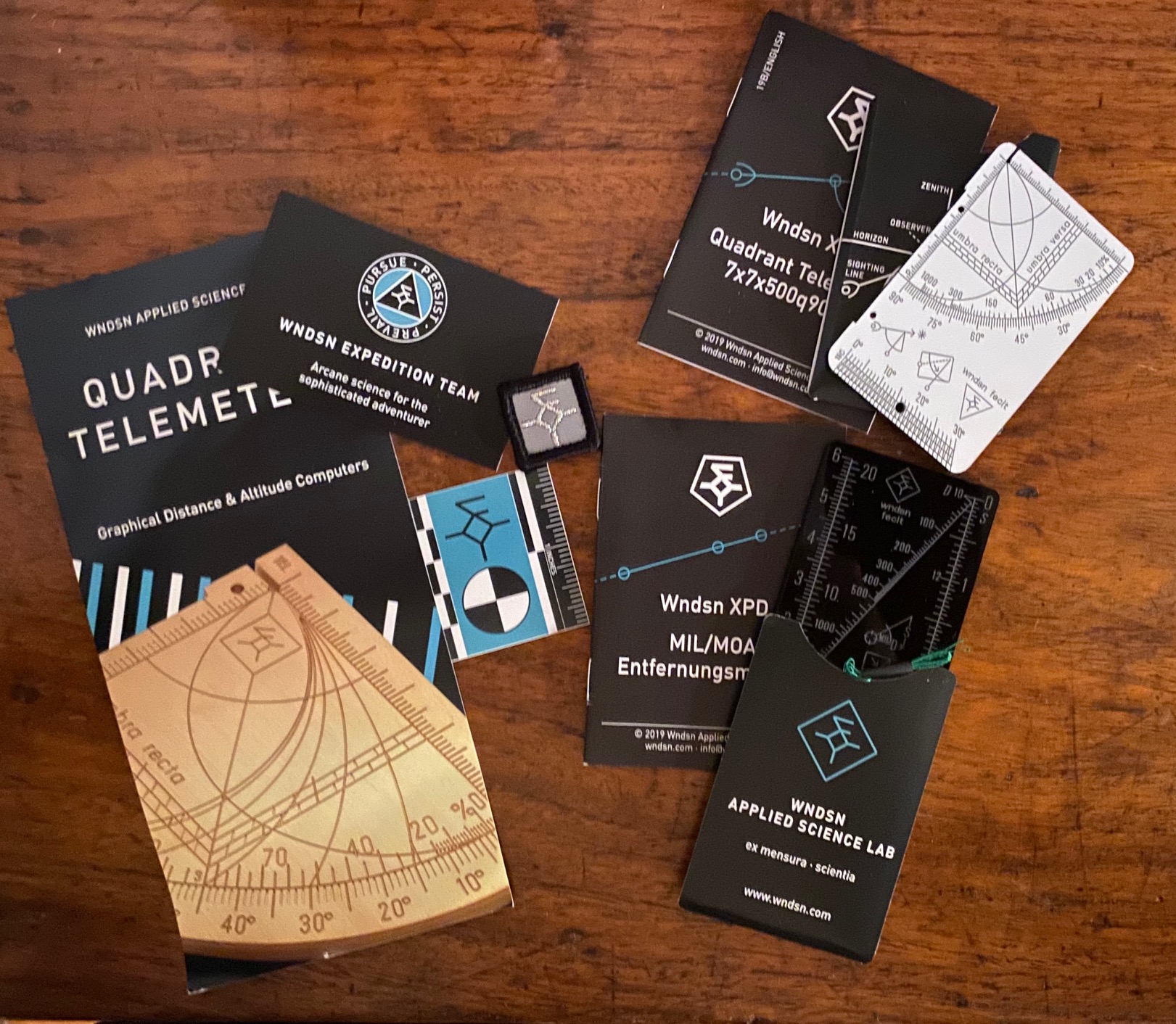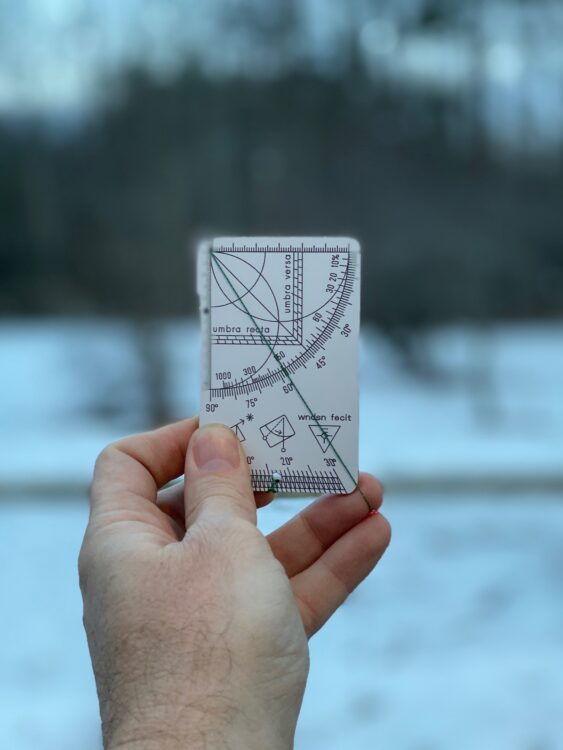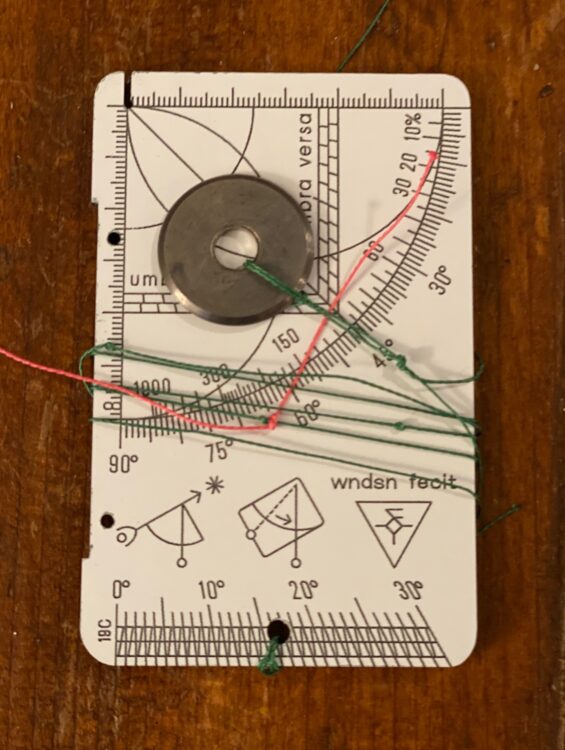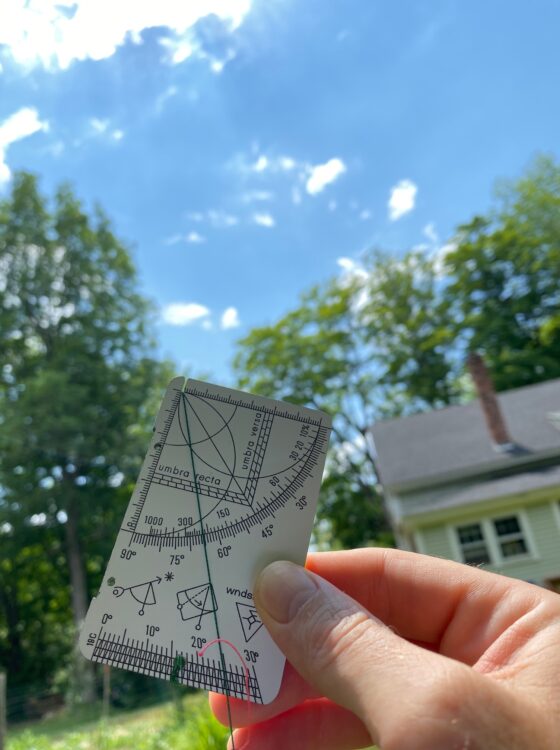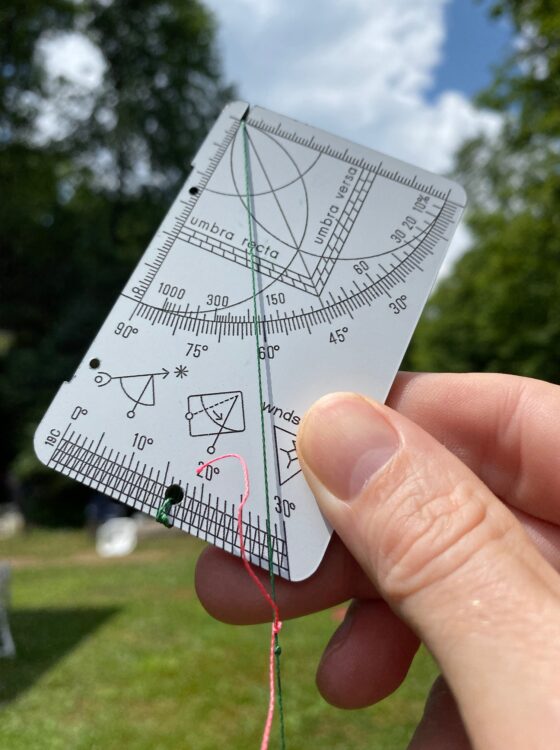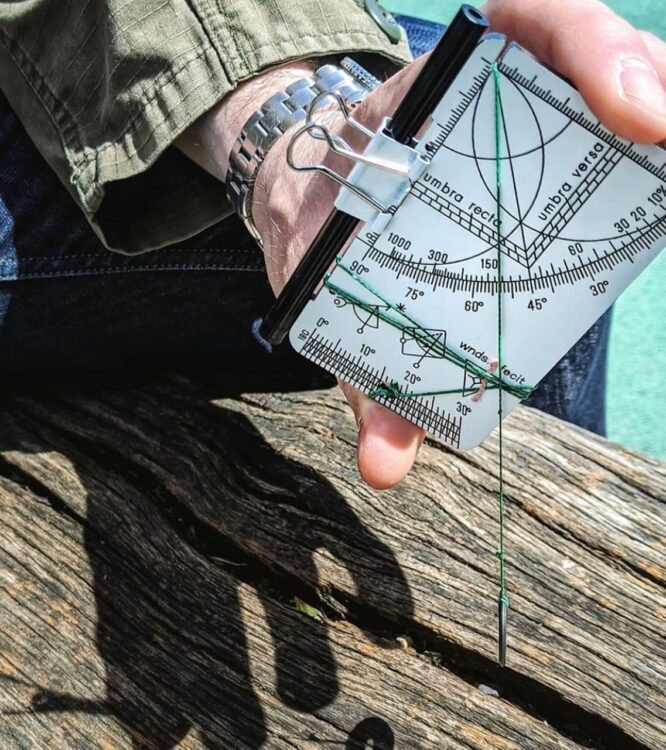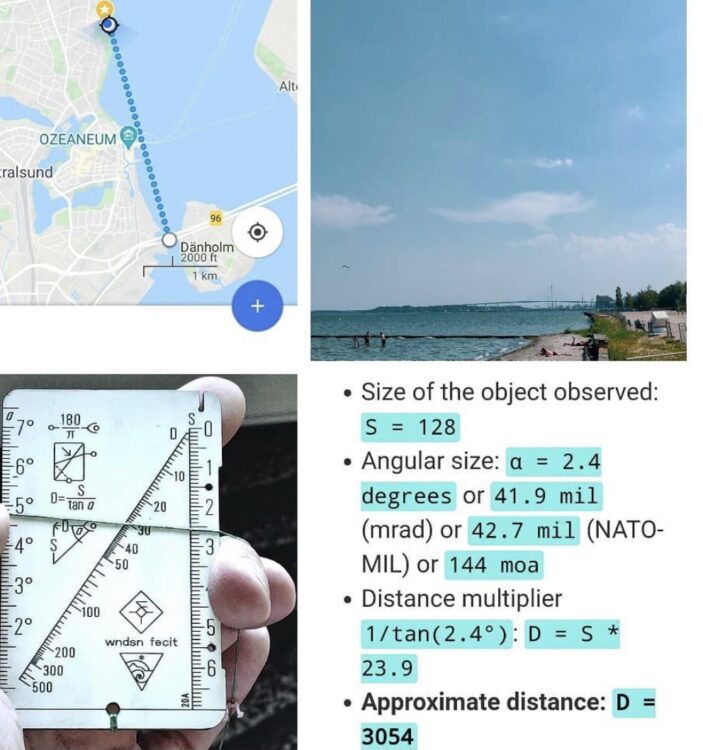For several months I had been watching an interesting Instagram account (Wndsn Expedition Team) posting tools for use in low probability, high impact scenarios. The bulk of their products revolve around decidedly low tech, but very versatile navigational aids. Always a fan of old navigation tools (compass, map, UTM/MGRS scale) I was intrigued.
At their core, Wndsn telemeters are low tech/analog graphical distance and altitude computers. Wndsn says they are “simple observational tools for measuring angles via various inputs combined with a number of means to directly process the acquired values.” In Scouts, I remember learning the tip to use my thumb for a rough measure of a known height, and then equate that by using the thumb to measure an unknown size object at a similar distance. At best this method was imprecise, but would do in a pinch.
Their flagship product is the Pocket Quadrant Telemeter, a multitool for emergency navigation.
Wndsn builds tools to measure values in the real world, calculate meaningful results from that data, and process what you’ve learned as inputs for various problem solving tasks. Ultimately, Wndsn graphical computers are thinking tools for teaching observation and making sense of the physical world.
All of Wndsn’s products come from the Wndsn Applied Science Lab in Berlin, Germany. Their motto is “Ex Mensura, Scientia” — knowledge from measurement.
The Quadrant Telemeter
The Pocket Quadrant Telemeter is measurement and calculation tool for indoor and outdoor use. Given Wndsn that these tools be available for use in high impact scenarios, they have built them to be rugged and durable. Made in Germany from cast acrylic, it comes with a Dyneema plumbline and tungsten carbide weight.
The telemeter makes simple the trigonometry needed to calculate distances, sizes and ranges. Not to worry though, it does the math for you as long as you do your part of aligning the provided string with the appropriate scales. It is a nomograph, a graphical calculating device, a two-dimensional diagram designed to allow the approximate graphical computation of a mathematical function. You’ll never even know you’re using trig to solve for the various measurements.
Scales on the Wndsn Quadrant Telemeter:
+ angular size and distance
+ height or depth of object
+ altitude or elevation
+ computation of sine, cosine, and tangent from a given angle and back
+ degree and slope quadrant
+ shadow square
+ inclinometer
The user can translate real world dimensions to the tool in their hand and thus read the matching distances directly from the telemeter, thereby computing navigational distances and other information. The user need only ensure a triangle is formed between user, scales, and object of measurement.
New features this year include:
- A sandwich acrylic: a black core with matte white outer slabs. The outer slabs are engraved rather than printed, providing high contrast letters, numbers and scales that will not wear off.
- A 100 MIL mark on the angular size scale. It is a versatile value for various calculations, including the translation of an object of unknown size to the height of 0.1x the known distance, or vice versa.
- Another scale mark, found on the angular size scale is located at 7.5°. 7.5° equals 30 minutes of earth rotation and the mark can be used against a fixed star to measure minutes passed in the sky.
- The slope/tan scale on the quadrant side was also redesigned for logarithmic scales with higher precision and better readability.
With more than 75 applications, I will be learning new ways to use this for years. It comes with a short basic manual, but WNDSN also sells a manual about the theory and practice of the instrument. Mastery of Time and Space is an addendum to the Grimoire Quadrantis Telemetrum which covers setup, history, as well as the functions and tutorials regarding the mastery of space. The addendum explains the functions provided to help master time and date, by observing and calculating the movement of the Sun across the ecliptic, and year.
Solar altitude calculation (Photo courtesy of Wndsn Instagram)
MIL/MOA Range Calculator
Using information from your MIL or MOA in your scope reticle, you can calculate the distance to an object of known dimensions with the MIL/MOA Calculator. Alternatively, if you know the target size in inches, you can use the tool to calculate the distance to the target in yards.
Photo courtesy of Wndsn IG
The user inputs MIL or MOA on the left side, and for the object size, if the value is in meters, input meters on the right hand of the S-scale, and read the resulting distance meters on the D-scale. If the object size is in feet, feet is input and read as feet; to get the result in yards, divide the value by 3. If the object size is in inches, use the inner, left hand S-scale. The value on the D-scale now will be in feet.
I briefly experimented with this tool but realized that in norther New England where the longest shot I might take is generally under a 100 yards, I wouldn’t be able to really put it through its paces. So I passed it along to someone who will use it, training troops in one of the world’s longest running civil wars.
Bottomline
I still have lots to learn about the use of this tool but I am excited to add it to my kit next to my other old school navigation tools.
Wndsn Telemeters make outstanding back up tools (or even primary f that is your bent). When GPS batteries die, laser rangefinders may fail or return errors, you can use the telemeter to double check your values or serve as your primary navigational aid.
Photo courtesy of Wndsn IG
You can order your Wndsn tools directly here.
From the manufacturer
Our bestselling Quadrant Telemeter (qTM) is a measurement, calculation, and exploration instrument with hundreds of units in use by professionals such as emergency, security, and law enforcement personnel, also teachers and instructors, as well as private enthusiasts, urban explorers and adventurers.
The current standard qTM model (v. 18L). Changes are: standardized scales and skewed transversal figures.
A tool for makeshift navigation, recon, and rangefinding, the double-sided Wndsn Pocket Quadrant Telemeter enables you to do more than merely guessing distances. Find an object of known size, or distance, or angle and measure with the appropriate scales and utilize the baked-in trigonometry to find the desired value by aligning the provided string across the various scales.
The backside features functions derived from ancient astrolabes; a degree and slope quadrant, a shadow square, as well as sine and cosine arcs and an inclinometer scale. By using our string as a plumb line, we offer three additional ways of sighting, plus we let you perform various trigonometric operations with the shadow square and sexagesimal scale, increasing the usefulness of the instrument with the list of applications topping 75 currently. The Quadrant Telemeter lets you measure angular size and compute distance, height or depth of object, altitude, or elevation, it allows computation of sine, cosine, and tangent for a given angle.
The best tool is the one you have with you, on you. Wndsn Telemeters are wallet-size distance and altitude nomographs developed in our applied science lab: Wndsn Telemeters combine a thousand years of civil engineering, surveying, navigation, and astronomy in one durable, low tech, high utility instrument that can be brought anywhere, is self-containing, and independent of external, modern technologies. Wndsn Telemeters are naked-eye tools that offer various means of measuring angular size, as well as graphical computers providing functions to process or convert the measured values. Their purpose is to help you navigate using known landmarks or astronomical features, to get a “second opinion” to cross-check values obtained with different means, or in emergency situations when other methods fail or are unavailable.
Wndsn Quadrant Telemeters continue to spark and promote interest in contemporary metrological science and ancient navigational history as well as educational astronomy.
Made in Germany.
- Wndsn Pocket Quadrant Telemeter, double-sided
- Dyneema string, 0.35 mm turquoise, pre-configured in the required length
- Plumb line weight, tungsten carbide (similar to the one pictured)
- Custom-made carton sleeve
- Wndsn Polaris Morale Patch, turquoise, black, white (optional)
- Printed 32-page Telemeter pocketbook (in English and German)
- Digital 240-page full manual (in English)
Specifications:
- 3.4″ x 2.2″ (8.5 x 5.5 cm)
- Glossy black
- 1/8″ (3 mm) Acrylic stock, laser engraved
Material Disclosure
I received this product as a courtesy from the manufacturer via Spotter Up so I could test it and give my honest feedback. I am not bound by any written, verbal, or implied contract to give this product a good review. All opinions are my own and are based off my personal experience with the product.
*The views and opinions expressed on this website are solely those of the original authors and contributors. These views and opinions do not necessarily represent those of Spotter Up, the administrative staff, and/or any/all contributors to this site.
